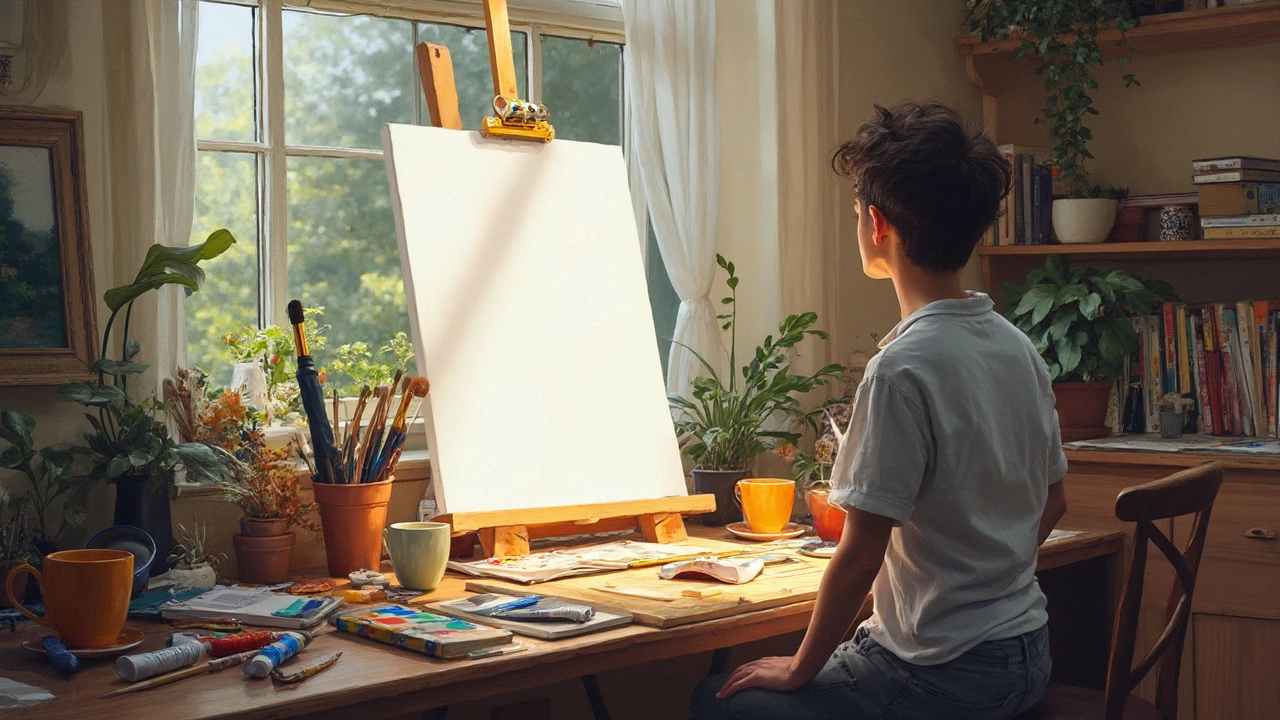How to Begin Your Art Journey in Easy Steps
So you want to make art but aren’t sure where to start? You’re not alone – most artists felt the same way the first time they picked up a brush or a piece of clay. The good news is you don’t need a fancy studio or a huge budget to get going. Below are the practical moves that will get you creating right away.
Pick the Right Materials Without Breaking the Bank
Begin with a few basic tools that match the medium you’re curious about. For watercolor, a small set of pan colors, a medium‑size brush, and a sheet of cold‑press paper do the job. If you lean toward drawing, a sketchbook, 2 B and 2 HB pencils, and a soft eraser are enough. Acrylic painting works well with a starter set of primary colors, a medium‑size flat brush, and a cheap canvas panel. The key is to avoid the temptation of deluxe kits that promise everything – they usually contain a lot you’ll never use as a beginner.
Visit a local art shop or check online stores for student‑grade supplies. They’re made for newcomers, cost less, and still give decent results. Keep a small notebook to jot down the brands you try and how they feel; this will help you upgrade later with confidence.
Try Easy First Projects That Build Confidence
Don’t jump straight into a portrait or a complex sculpture. Start with exercises that let you focus on one skill at a time. For watercolor, try a simple sky wash – stretch a wet brush across the paper, watch the pigment flow, and learn how the paper absorbs water. In drawing, practice quick 1‑minute sketches of everyday objects: a coffee mug, a shoe, a fruit. These short sessions train your hand‑eye coordination without overwhelming you.
If you’re interested in sculpture, grab some air‑dry clay and make a basic ball or a rough cylinder. Feel the texture, see how it holds shape, and learn to smooth edges. The goal is to finish each mini‑project, so you get the satisfaction of a completed piece and a clear sense of progress.
Share your work on social media or a friendly art forum. Even a tiny doodle can spark helpful feedback and keep you motivated. Remember, the point isn’t perfection – it’s building a habit of creating.
Once you’re comfortable with these starter exercises, gradually add layers: combine a simple watercolor wash with a light pencil sketch, or paint a basic landscape before tackling a portrait. Each step builds on the last, turning “how to begin” into a clear, doable path.
In short, pick a modest set of supplies, choose bite‑size projects, and make creating a regular habit. You’ll find that the biggest barrier was just getting started, and after that, the art world opens up faster than you think.

16 Jun 2025
Thinking about trying abstract painting but don’t know where to start? This guide breaks down what you need, how to pick tools, and why you don’t need to worry about ‘getting it right.’ You’ll learn how to approach a blank canvas, find inspiration from everyday life, and experiment without stressing about techniques. Perfect if you’re new or just looking to shake up your creative routine. Get ready to make something original—and maybe even surprise yourself.
Continue reading...
